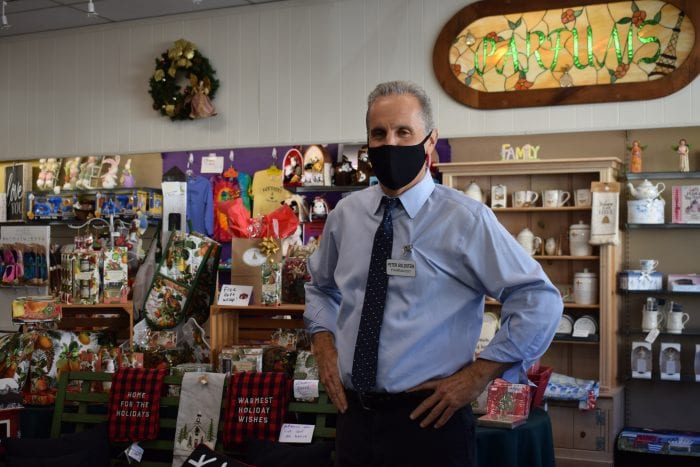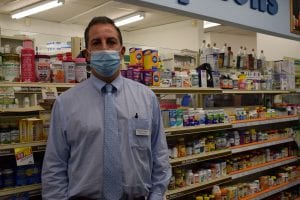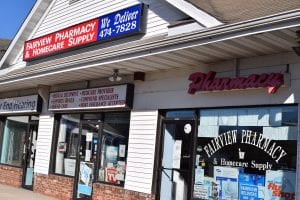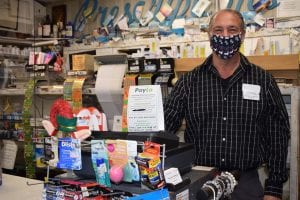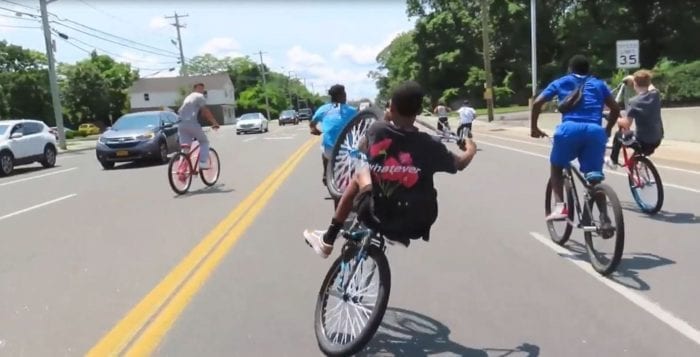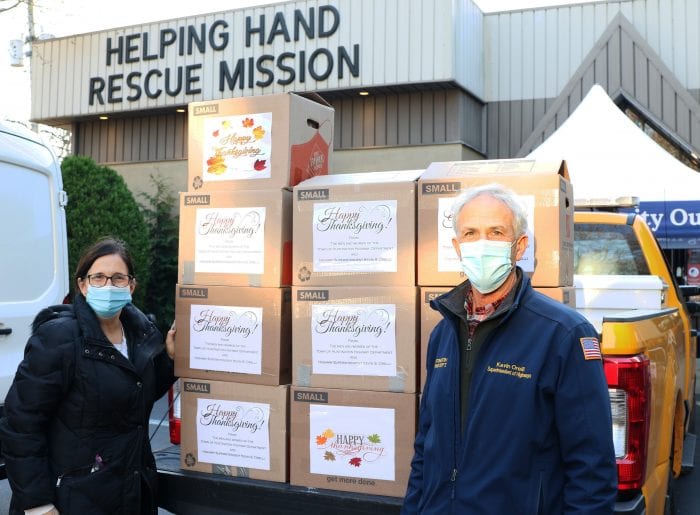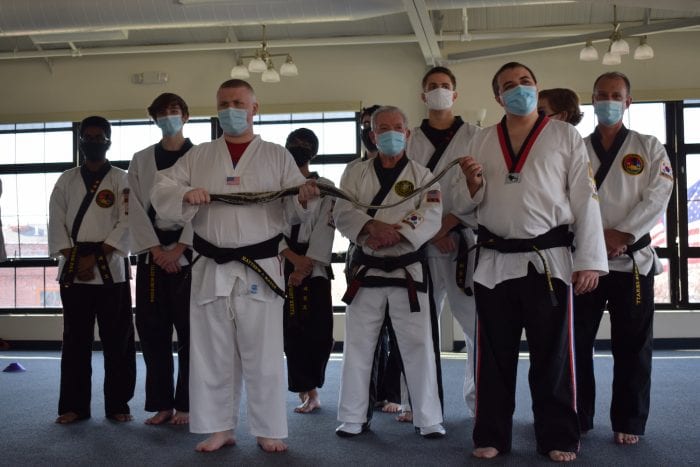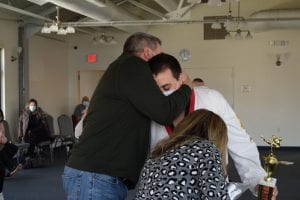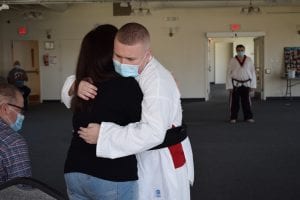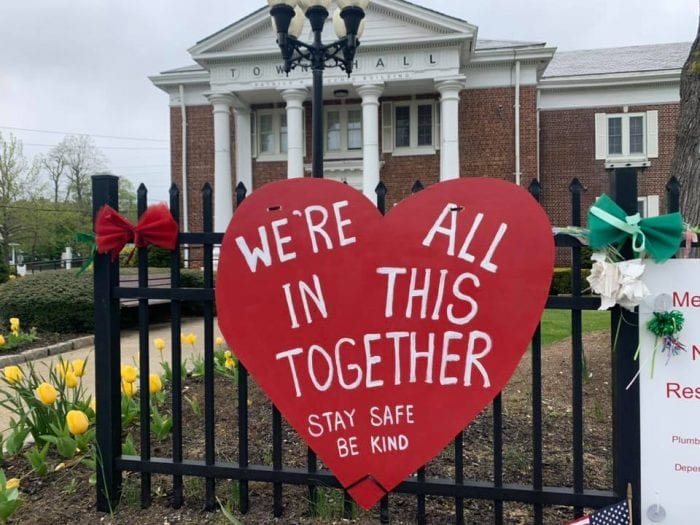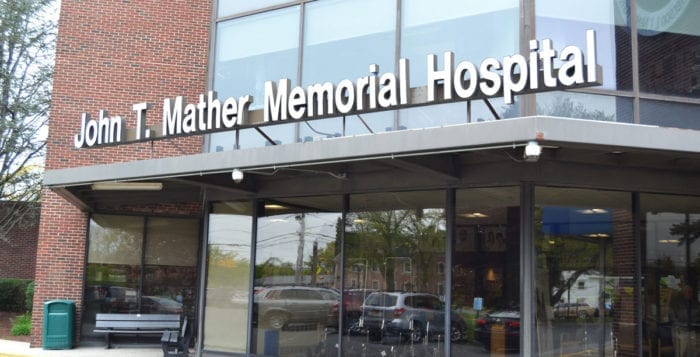By Daniel Dunaief
The body’s savior in its battle against disease, immune cells respond to a collection of signals which tell them to dial up or down their patrolling efforts.
Scientists and doctors are constantly trying to determine what combination of beneficial or detrimental signals can lead to different outcomes.
Recently, Assistant Professor Tobias Janowitz and Professor Douglas Fearon of Cold Spring Harbor Laboratory, working with Duncan Jodrell at the University of Cambridge Cancer Research Institute, used an inhibitor developed and tested for the treatment of the human immunodeficiency virus (HIV), the virus that causes AIDS, in patients with colorectal and pancreatic cancer for a week.

The study was done on 24 patients and is a phase 0 effort, in which scientists and doctors test the pharmacokinetics and pharmacodynamics of the treatment.
In the study, which was published in the prestigious journal Proceedings of the National Academy of Sciences of the United States of America, the researchers showed that the treatment got into the blood, that the patients tolerated it, and that it enabled immune treatments to reach the tumors.
While this is an encouraging step, Janowitz cautioned that any such studies are far from a potentially viable treatment for either type of cancer. Indeed, the Food and Drug Administration requires a lengthy and rigorous scientific process for any possible therapy, in part because numerous promising efforts haven’t led to viable therapies for a host of reasons.
Still, this study offers a promising beginning for a potential approach to treating various forms of cancer.
Janowitz said patients “tolerated the treatment by and large very well,” and that “no new toxicities were observed compared to the ones that were known.” Some people developed slight disturbances in their sleep, which were immediately resolved after they discontinued using the treatment.
The history of the possible treatment for HIV showed similar side effects years ago. “We anticipated it would have a favorable toxicity profile,” said Janowitz.
The link between this early candidate for HIV treatment and cancer came from an analysis of the receptor that is expressed on immune cells, called CXCR4.
This receptor is targeted by the drug plerixafor. Most of the work linking the inhibited receptor to potential cancer treatment came from Fearon’s lab, Janowitz explained.
Fearon found that blocking the receptor enabled immune cells to migrate to cancer in a mouse study. Along with Janowitz and CSHL Cancer Director David Tuveson, he published a paper on the preclinical study in a mouse model in PNAS in 2013.
This inhibitor also has been used to release stem cells from bone marrow that can be used in a hematological context for treatment and transplantation. During their cancer study, the scientists found these stem cells circulating in the blood. It’s unclear from this first study how the combination of cancer therapy and releasing stem cells from bone marrow affects patients.
“We are not able to say that that has a relevancy to the cancer patient,” Janowitz said.
While some drug treatments work for a period of time until a cancer returns, immunotherapy may have a longer term benefit than chemotherapeutics, as some studies suggest.
“By giving this drug, our hope is that we enable an influx of immune cells into the tumor and have an across the board integrated immune response,” Janowitz said.
Down the road, Janowitz said the group hopes that this treatment will be a part of a combination of treatments that treat cancer.
By enabling immune cells to access cancer where the mutation rate is lower, these treatments could provide a sustained treatment.
The researchers chose pancreatic and colorectal cancer because those cancers don’t respond to current immunotherapy. “It’s really important to uncover why that is,” said Janowitz. The scientists had evidence from pre-clinical models that the pathway and the biochemistry that this drug activates can be effective.
In his lab, Janowitz performed some of the mechanistic work to understand why this drug might function. A medical doctor who is awaiting his license to practice in New York, Janowitz was also involved in the trial management group and in analyzing the multiplicity of data that came together.
The researchers in this study came from fields including bioinformatics, clinical medicine, pharmacology, and immunology. Fearon explained in an email that Jodrell wrote the grant to Stand Up to Cancer, or SU2C, in 2014 to obtain funding for the trial. Jodrell oversaw the clinical trial and Fearon directed the evaluation of the immunology findings.
Janowitz had a “major role in putting together the clinical data for the write-up,” and Daniele Biasci, a computational biologist at Cambridge, developed the analysis of the transcriptional data of the tumor biopsies, said Fearon.
As for the next stages in this work, physicians at Johns Hopkins Medicine International and Dana Farber Cancer Institute will soon start a phase 2 trial that is already registered and that combines this inhibitor with anti-PD-1.
Fearon said his continued pre-clinical research has shown that this immune suppressive pathway may be relevant to multiple human carcinomas, and has identified new potential targets for more effective immunotherapy.
Janowitz, meanwhile, will explore the systemic immune competence of the body as he continues to take a top down, broad-based approach to cancer.
He would like to know the degree to which the body can mount an effective immune response, while also exploring the factors that diminish that ability.
Separately, with three young children at home, Janowitz and his wife Clary, who is a radiation oncologist, have been balancing between their busy careers and the demands of parenting during the pandemic. Their extended families are both in Europe.
“We can’t visit them and they can’t visit us,” he said adding that he appreciated the way CSHL has offered day care to young children on campus.
As for this study, Janowitz said he’s encouraged by the early results.




















